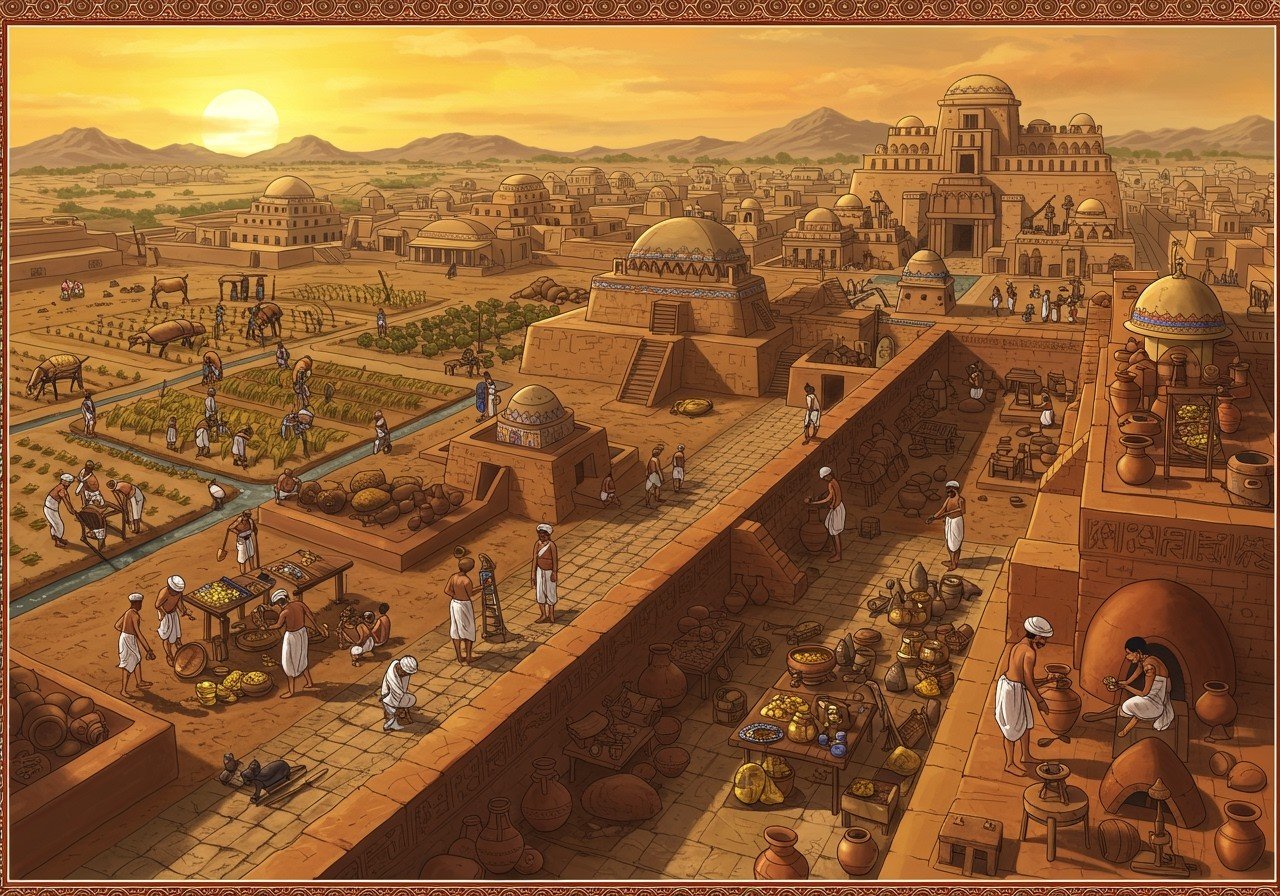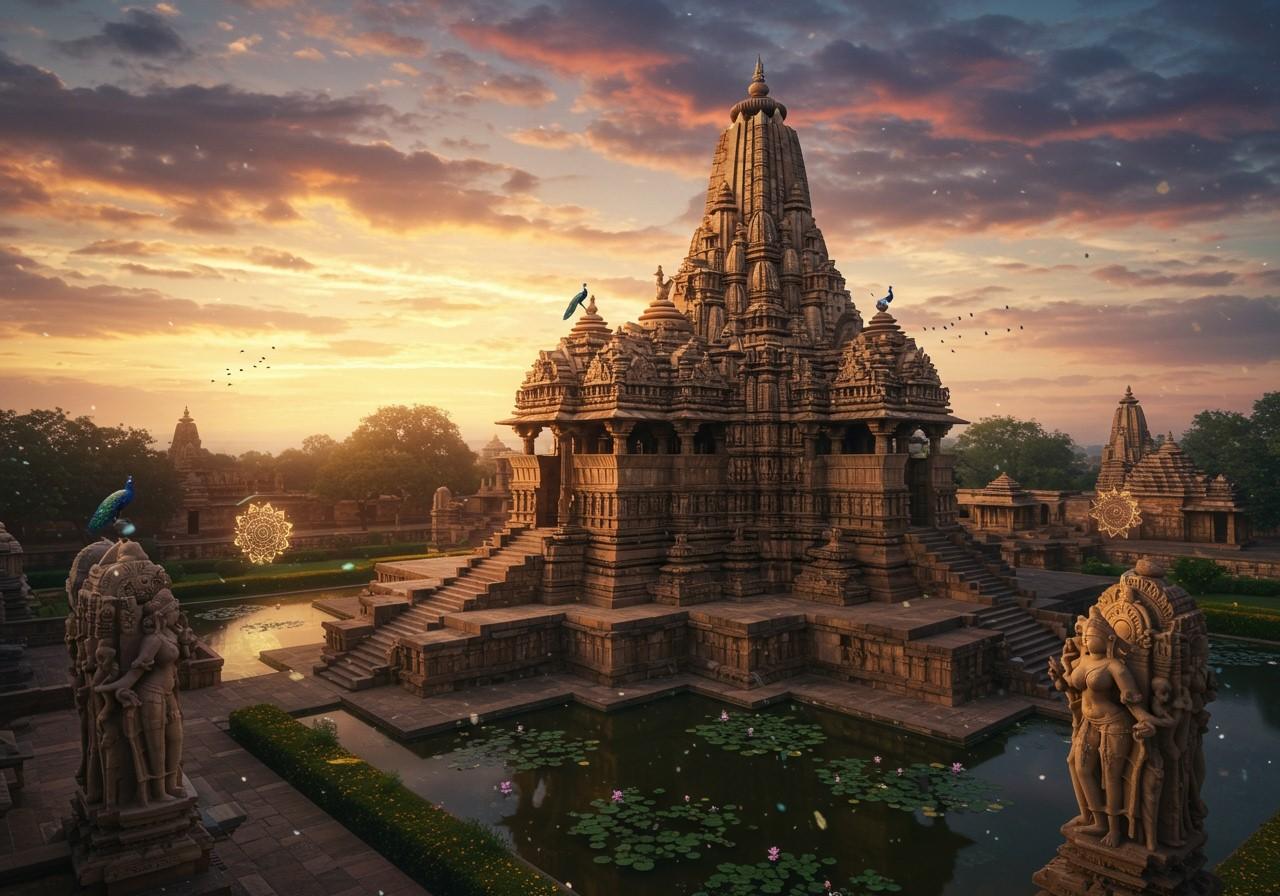
The Indus Valley Civilization (3300–1300 BCE), located in present-day Pakistan and northwest India, stands as a remarkable example of early urban development. Known for its sophisticated urban planning, architecture, and social structure, this civilization thrived on a complex interplay of agriculture, trade, and economic activities. Let’s explore these key aspects that shaped this ancient society.
Agriculture: The Foundation of the Civilization
Agriculture served as the backbone of the Indus Valley Civilization. The fertile lands of the Indus River Valley, aided by sophisticated irrigation systems like canals and wells, allowed for the cultivation of various crops. Wheat, barley, peas, and mustard were staples, forming the basis of their diet. Animal husbandry also played a significant role, with domesticated animals like cattle, sheep, and goats providing meat, dairy, and labor. The use of advanced farming tools, such as plows and seed drills, further enhanced agricultural productivity.

Trade: Connecting the Indus Valley to the World
A vibrant trade network connected the Indus Valley Civilization with neighboring regions and distant lands, including Mesopotamia, Persia, and Central Asia. This extensive trade fostered economic prosperity, cultural exchange, and social cohesion. Goods were often exchanged based on weight, using standardized stone weights to ensure fair transactions. The bustling port city of Lothal served as a major trading hub, facilitating the exchange of commodities such as cotton textiles, beads, pottery, and metals. Trade seals and inscriptions provide evidence of a sophisticated system of documentation and administration.
Explore the rich history and culture of ancient civilizations.
Economy: A Complex System
The Indus Valley Civilization’s economy was a multifaceted system encompassing agriculture, trade, industry, and skilled craftsmanship. Well-planned cities, complete with drainage systems, supported diverse economic activities. A clear social hierarchy and occupational specialization emerged, with individuals engaging in various professions, including merchants, artisans, and laborers. Centralized administration oversaw resource management and trade regulation. The presence of luxury items and large public structures testifies to the civilization’s economic prosperity.
Poojn.in, India’s leading cultural goods and services store, offers a wide range of products that connect you with the rich heritage of ancient India. Just as the Indus Valley Civilization valued quality and craftsmanship, Poojn.in provides authentic and meticulously crafted items for your spiritual and cultural needs. Enhance your puja experience with:
- Paddy Seeds: High-quality paddy seeds, reminiscent of the agricultural practices of the Indus Valley Civilization, are perfect for various rituals and ceremonies. Honor the legacy of ancient agriculture with these sacred grains.
- Cotton Thread: Just as cotton textiles were a significant trade commodity in the Indus Valley, Poojn.in offers a variety of colored cotton threads essential for various puja rituals. Connect with the ancient tradition of textile craftsmanship.
- Camphor Powder: Pure camphor powder, ideal for creating a sacred atmosphere during prayers and ceremonies. Experience the purity and sanctity of traditional rituals with this essential puja item.
FAQs: Understanding the Indus Valley Civilization
What were the primary crops cultivated in the Indus Valley? The people of the Indus Valley primarily cultivated wheat, barley, peas, and mustard. They also grew other crops like sesame and dates. The fertile lands of the Indus River Valley and the use of irrigation systems supported their agriculture.
How did trade function within the Indus Valley Civilization? Trade played a crucial role in the Indus Valley Civilization. They established extensive trade routes, connecting them with regions as far as Mesopotamia and Central Asia. They traded goods like textiles, pottery, beads, and metals. Standardized weights and measures ensured fair transactions.
What characterized the economy of the Indus Valley Civilization? The economy of the Indus Valley Civilization was diverse, based on agriculture, trade, and craft production. They had skilled artisans who produced various goods, including pottery, jewelry, and tools. Their well-planned cities and organized administration supported a complex economic system.
Conclusion
The Indus Valley Civilization remains a fascinating subject of study, providing valuable insights into the development of early urban societies. Their advanced agricultural practices, extensive trade networks, and complex economy contributed to their prosperity and cultural richness. By exploring their achievements, we gain a deeper appreciation for the ingenuity and resilience of ancient civilizations.
Discover more about ancient heritage sites and their significance.


